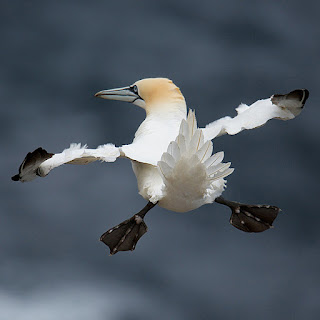We’ve all seen those heartwarming viral videos where a deer tangled in a fence or a fox with its head stuck in a jar suddenly become calm and “grateful” when a human approaches to save them from their predicament.
For example, take this rescue of a wild deer:
But, as much as we might like to believe that these wild animals are indeed showing gratitude for their rescuer, experts say that’s not really the case.
“Since the animal that is being rescued rarely feels better immediately, it is unlikely that they understand they are being helped,” Dave Zahniser, rescue manager at the Marine Mammal Center, told Discovery.com.
The reason the animal becomes so calm could be due to something called “capture myopathy syndrome,” which is a form of shock.
This is not, however, the cause of that well-known frozen “deer-caught-in-headlights” look, which is due to a deer’s inability to see in bright light, causing it to freeze. It is also not why some animals, like possums, “play dead.” Scientifically referred to as thanatosis, animals use this as a defense mechanism only when escape from a predator is impossible.
So what exactly is capture myopathy?
According to “Zoo & Wild Animal Medicine” by University of California, Davis researcher Murray Fowler, it is “probably an inherent mechanism that hastens the death of an animal following capture by a predator, thereby reducing pain in the prey and conserving energy for the predator — a mechanism which is, in a way, beneficial to both.”
Karen Emanuelson, director of veterinary services at the Oakland Zoo in California, told Discovery.com the syndrome causes an animal to go into a form of shock that “may fill their lungs with fluid and lead to later death, even if they are saved from an immediate threat.”
But what about those cases where wild animals seek out humans to help them like in the video above?
Emanuelson told Discovery.com those animals have usually already become habituated around people.
For example, Emanuelson said that two years ago, a dolphin caught in a hook approached people on a night dive in Hawaii. The divers helped the dolphin free itself. She said the dolphins there “have learned people have capabilities that could benefit them.”
And in those cases of, say, a mother duck quacking loudly when one of her ducklings falls into a sewer, the experts say that’s just a mother’s natural instinct. She is not necessarily trying to get the attention of a potential human rescuer, but merely attempting to maintain communication with her offspring.
Although it might go against our instincts, the experts warn us civilians not to go near wild animals in distress.
“An animal that is injured, ill or orphaned is already experiencing great stress,” notes Wildlife International. “It may be in pain, dehydrated, starving and fearful.”
To minimize further stress, “be prepared and have a plan of action, as well as all the necessary equipment,” Wildlife International recommends.
“A well-meaning action to assist could actually even be illegal, depending on the species and location,” Zahniser told Discovery.com, “so always call a local rescue hotline or animal control to assist.”
Emanuelson told Discovery.com those animals have usually already become habituated around people.
For example, Emanuelson said that two years ago, a dolphin caught in a hook approached people on a night dive in Hawaii. The divers helped the dolphin free itself. She said the dolphins there “have learned people have capabilities that could benefit them.”
And in those cases of, say, a mother duck quacking loudly when one of her ducklings falls into a sewer, the experts say that’s just a mother’s natural instinct. She is not necessarily trying to get the attention of a potential human rescuer, but merely attempting to maintain communication with her offspring.
Although it might go against our instincts, the experts warn us civilians not to go near wild animals in distress.
“An animal that is injured, ill or orphaned is already experiencing great stress,” notes Wildlife International. “It may be in pain, dehydrated, starving and fearful.”
To minimize further stress, “be prepared and have a plan of action, as well as all the necessary equipment,” Wildlife International recommends.
“A well-meaning action to assist could actually even be illegal, depending on the species and location,” Zahniser told Discovery.com, “so always call a local rescue hotline or animal control to assist.”











































